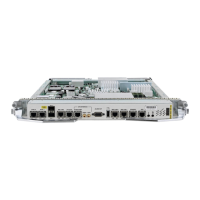IPv6 SupportIPv4 SupportFeature
NoYesAuto-RP
YesYesMulticast VPN
YesYesInterAS Option A
YesYesBSR
YesYesBGP
NoYesMSDP
YesYesMulticast NSF
YesYesOOR handling
YesYesGlobal Protocol Independent
Multicast Bidirectional support
1
Multicast Routing Functional Overview
Traditional IP communication allows a host to send packets to a single host (unicast transmission) or to all
hosts (broadcast transmission). Multicast provides a third scheme, allowing a host to send a single data stream
to a subset of all hosts (group transmission) at about the same time. IP hosts are known as group members.
Packets delivered to group members are identified by a single multicast group address. Multicast packets are
delivered to a group using best-effort reliability, just like IP unicast packets.
The multicast environment consists of senders and receivers. Any host, regardless of whether it is a member
of a group, can send to a group. However, only the members of a group receive the message.
A multicast address is chosen for the receivers in a multicast group. Senders use that group address as the
destination address of a datagram to reach all members of the group.
Membership in a multicast group is dynamic; hosts can join and leave at any time. There is no restriction on
the location or number of members in a multicast group. A host can be a member of more than one multicast
group at a time.
How active a multicast group is and what members it has can vary from group to group and from time to time.
A multicast group can be active for a long time, or it may be very short-lived. Membership in a group can
change constantly. A group that has members may have no activity.
Routers use the Internet Group Management Protocol (IGMP) (IPv4) and Multicast Listener Discovery (MLD)
(IPv6) to learn whether members of a group are present on their directly attached subnets. Hosts join multicast
groups by sending IGMP or MLD report messages.
Many multimedia applications involve multiple participants. Multicast is naturally suitable for this
communication paradigm.
Cisco ASR 9000 Series Aggregation Services Router Multicast Configuration Guide, Release 5.1.x
4
Implementing Layer-3 Multicast Routing on Cisco IOS XR Software
Multicast Routing Functional Overview

